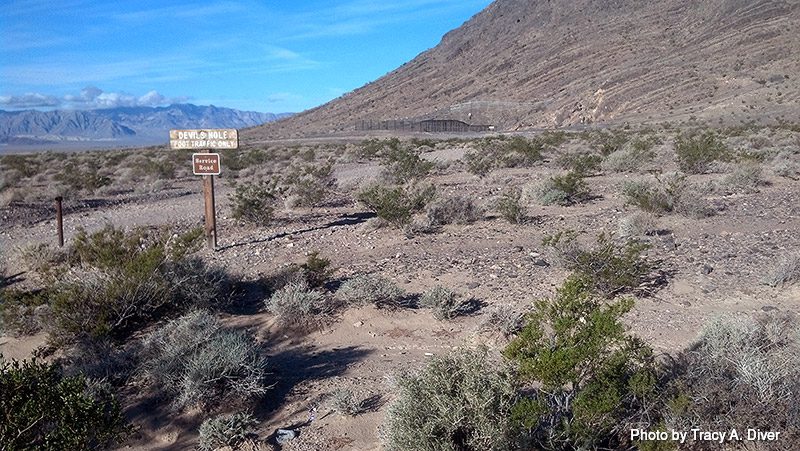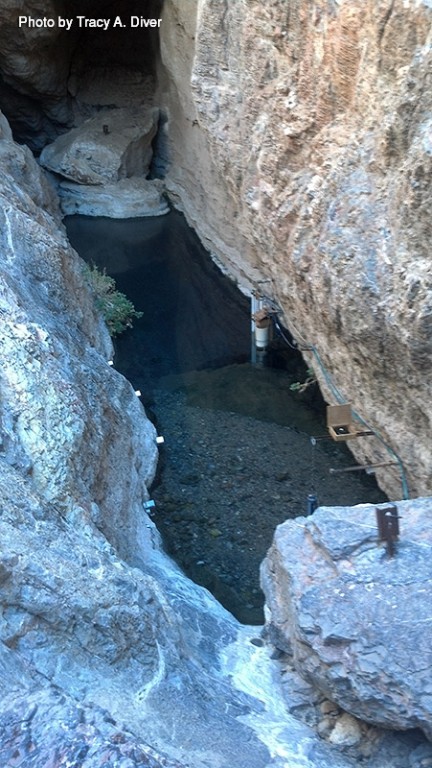Wednesday June 19, 2013
Our complex and amazing planet encompasses a vast range of extremes, from highly saline waters, to extreme temperatures (both hot and cold), and extreme ranges of pH (both basic and acidic). Many organisms have adapted to survive in these extremes, including bacteria, aquatic insects, and even fishes, such as the Devils Hole pupfish. Devils Hole is an aquifer-fed cavern in Ash Meadows National Wildlife Refuge, and it contains the only endemic population of the Devils Hole pupfish. Devils Hole is located in Nevada and is an extension of Death Valley National Park. The species diversity of Ash Meadows and Death Valley was largely influenced by the retreat, or drying up, of water during the Pleistocene era (2.6 million to 11,700 years ago). This area was once covered by a series of rivers and lakes; however, when the waters retreated, fishes that had migrated from the Colorado River either died or were confined to areas with remaining water, where they evolved into different species. While pupfish have inhabited this region since the late Pliocene (2-3 million years ago), the Devils Hole Pupfish only diverged from other pupfish of the Amargosa River approximately 10,000 to 200,000 years ago (Riggs and Deacon 2002, Smith et al. 2002).
How the Devils Hole pupfish first came to inhabit Devils Hole remains unclear, but this species has been able to stave off extinction for at least 10,000 years, despite various events that have threatened its existence. The tiny population only numbers in the hundreds at most (numbers haven’t exceeded 553 since 1972), and the species is listed as endangered under the Endangered Species Act. Even though Devils Hole is a deep, cavernous desert oasis, Devils Hole pupfish are localized to a small, shallow ledge within the hole. The fish’s primary habitat consists of a rock shelf less than 91 ft2 in area immediately below the water’s surface, and this feature is essential to the survival of the species. The rock shelf not only serves as the sole spawning area (Deacon and Williams 1991) but also serves as the pupfish’s primary foraging area (Riggs and Deacon 2002). Efforts continue to study this species and others that live in the harsh desert environment, and groups such as the Desert Fishes Council have been instrumental in their protection. Stay tuned for an upcoming post about how the Devils Hole pupfish survives in this unlikely fish habitat.


